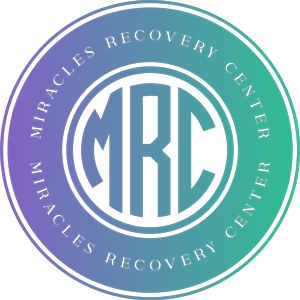Navigating the journey toward recovery can be daunting, especially when faced with so many choices for treatment. Inpatient rehab stands out as a comprehensive option for those seeking a structured and supportive environment to embark on their healing process. This guide aims to simplify the decision-making process by breaking down the essentials of inpatient rehab, helping you make informed choices that are right for you or your loved ones.
Table of Contents
- 1 Understanding Inpatient Rehab: What It Is and Who It’s For
- 2 Identifying Your Needs: Key Factors to Consider
- 3 Exploring Treatment Options Available in Inpatient Rehab
- 4 Evaluating Facilities: What to Look For
- 5 Understanding the Financial Aspects of Inpatient Rehab
- 6 Planning for Life After Rehab: Ensuring Sustained Recovery
- 7 Making the Right Choice for Your Recovery Journey
Understanding Inpatient Rehab: What It Is and Who It’s For
Inpatient rehab, also known as residential treatment, provides individuals with a structured environment where they can focus solely on their recovery. This section will explore what inpatient rehab involves, who may benefit most from it, and how it differs from other types of rehabilitation options.
The structured environment of inpatient rehab is particularly effective for those who need round-the-clock care. It provides an opportunity to distance oneself from everyday triggers and temptations, offering a controlled setting where recovery becomes the primary focus. This makes it especially beneficial for individuals with severe addiction issues or those who have relapsed in the past. By offering a safe harbor from the chaos that often accompanies addiction, inpatient rehab allows for concentrated healing and growth.
Not all rehab options are created equal. Inpatient programs often provide a more intensive approach compared to outpatient alternatives. This intensity can be crucial for individuals dealing with co-occurring disorders, as integrated treatment is usually part of the program, addressing both addiction and mental health concerns simultaneously. This multi-faceted approach increases the likelihood of sustained recovery, allowing individuals to work on rebuilding their lives within a stable and supportive community.
Identifying Your Needs: Key Factors to Consider
Selecting the right inpatient rehab facility requires a thorough understanding of your personal or your loved one’s recovery needs. This section will discuss crucial considerations such as the type of addiction, mental health support, and any special requirements that might influence your choice.
Every individual is unique, and so are their needs during recovery. For some, dual diagnosis support is essential, especially if they are dealing with issues like depression or anxiety alongside substance use. It’s crucial to choose a rehab facility that caters specifically to these needs, with programs that integrate mental health treatment. Additionally, cultural sensitivity and language support can be vital for non-native speakers or those from diverse cultural backgrounds, ensuring they receive care that is both effective and respectful.
Determining the best fit often extends beyond the walls of the rehab center. Consider discussing your options with healthcare professionals who understand your medical history and can offer tailored advice. This collaboration can help narrow down facilities that not only focus on addiction treatment but also align with long-term recovery goals, such as reconnecting with family, rebuilding career paths, and integrating healthy habits into daily life.
Exploring Treatment Options Available in Inpatient Rehab
Inpatient rehabs offer a variety of treatment options tailored to address different aspects of addiction recovery. This section will give an overview of common treatment modalities, including individual and group therapy, medical care, and holistic practices, highlighting their roles in the recovery process.
Individual therapy is a cornerstone of many inpatient programs, providing a space for personally tailored sessions where individuals can delve into underlying issues contributing to their addiction. These sessions are often complemented by group therapy, which fosters a sense of community and shared experience. Such settings allow participants to practice communication and social skills in a safe and supportive environment, essential for reintegration into everyday life.
Holistic practices such as yoga, meditation, and art therapy are increasingly becoming a staple in inpatient rehab. These therapies address the mind-body connection, helping individuals gain control over their physical and mental states. This comprehensive approach not only aids in detoxification but also equips individuals with valuable tools for managing stress and preventing relapse. The inclusion of family therapy and educational workshops further supports a well-rounded recovery process, emphasizing the importance of a support network post-treatment.
Evaluating Facilities: What to Look For
The quality and environment of the rehab facility can greatly influence recovery outcomes. This section provides tips on what to look for when evaluating facilities, covering aspects such as accreditation, staff qualifications, amenities, and the overall atmosphere.
An accredited facility ensures that the rehab adheres to industry standards, providing a baseline of quality and reliability. It’s important to verify that the staff holds the proper credentials and experience, particularly in handling specific addictions or dual diagnoses. Amenities, while seemingly superficial, can significantly impact comfort levels during the recovery journey. Facilities offering serene environments and recreational options often enhance the therapeutic process, providing a balance between treatment and leisure.
Assessing the facility’s philosophy is critical. Some centers adopt a 12-step approach, while others may focus on faith-based or secular therapy methods. Understanding these frameworks can aid in finding a program that resonates with your values and beliefs, offering a more harmonious and effective treatment experience.
Understanding the Financial Aspects of Inpatient Rehab
Cost is a significant factor in choosing an inpatient rehab facility. This section will discuss various financial considerations, including insurance coverage, payment plans, and resources for financial assistance, ensuring you have a clear picture of what to expect financially.
Navigating insurance policies can be daunting, but many inpatient rehabs have staff dedicated to helping patients understand their coverage. It’s beneficial to contact your insurer directly to confirm what aspects of the treatment are covered and to what extent. Some facilities offer sliding scale fees or scholarships for those who qualify, making it possible to access treatment without straining financial resources.
In addition to insurance, consider exploring other financial resources such as non-profit organizations that offer grants or assistance for rehab costs. Payment plans are often available directly through the rehabilitation centers, allowing for more manageable financial planning. Understanding these options can ease the burden and make the journey to recovery more accessible.
Planning for Life After Rehab: Ensuring Sustained Recovery
Successful recovery doesn’t end at the conclusion of an inpatient program. This section explores aftercare planning, highlighting the importance of continued support through outpatient programs, support groups, and lifestyle changes to maintain long-term sobriety.
Aftercare is an integral part of the recovery process. Establishing a solid plan for life post-rehab involves setting up a supportive network, whether it be through family, friends, or support groups. Outpatient programs can provide continued structured support, maintaining the gains made during inpatient treatment and helping individuals stay accountable as they navigate the challenges of everyday life.
Lifestyle changes such as adopting a healthy routine, engaging in meaningful activities, and ongoing therapy sessions help sustain recovery by reinforcing the skills and strategies learned during treatment. Building a life that supports sobriety is essential for long-term success and happiness. Encouragingly, many inpatient facilities assist with discharge planning, ensuring a smooth transition from the rehab center to the wider world.
Making the Right Choice for Your Recovery Journey
Choosing the right inpatient rehab facility involves considering a variety of factors, from treatment options to location and cost. By understanding what inpatient rehab entails and evaluating your personal needs, you can make a well-informed decision that sets you or your loved one on a successful path to recovery. Remember, the right support and environment can make a world of difference during the recovery journey. To explore our comprehensive services, visit our homepage and take a proactive step towards recovery today.











